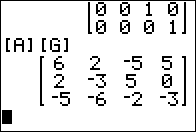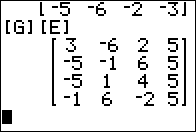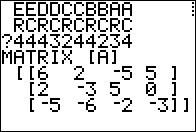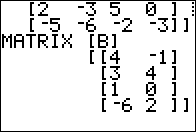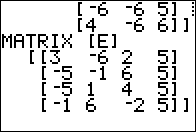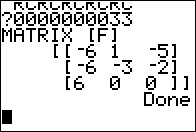
3 x 3
identity matrix times [A], then the first thing we should do
is to create that identity matrix.
The TI-83/84 calculators have a built-in function,identity(,
that does this. We move to the matrix window and then select the
MATH option, and then move the highlight down to the
desired item, as shown in Figure 01.
Then we can press  to paste that portion of a command onto the main screen.
to paste that portion of a command onto the main screen.

3 to tell the
calculator that we want to create a 3 x 3 identity
matrix. Then we close the function with a right
parenthesis and we will store the matrix in [G].
After creating the command we press  to have the calculator perform it. The calculator then does the work and displays
the new matrix.
to have the calculator perform it. The calculator then does the work and displays
the new matrix.
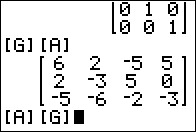
Then, jsut as demonstration, we formulate, at the bottom of Figure 03, the command [A][G]. This should not work because [A] is a
3 x 4 matrix and [G] is a
3 x 3 matrix (the "inner" dimensions do not match).
When we press 3 x 4 the calculator respondes with Figure 04.
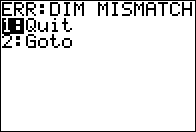
 to Quit and return to the main screen.
to Quit and return to the main screen.

3 x 3
identity matrix in [G] we can look at some other
products. [D] is a 4 x 3
so we can multiply it on the right by [G].

43 x 3
so we can multiply it on the left or the right by [G].
Figure 06 shows the former.
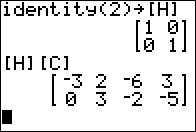
2 x 4
so we need a 2 x 2 identity
to multiply it on the left. Figure 07 creates such an identity and puts
it into [H]. Then it does the multiplication.

4 x 2
so we can multiply it on the right by [H].
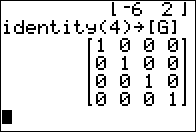
4 x 4 identity.
